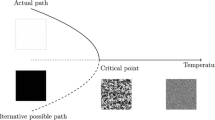Abstract
Ever since 1927 when the author began his work in mathematical biology, one of the most intriguing problems in biology appeared to him to be: Why are there only two sexes? The question may seem to be utterly absurd, possibly because we are empirically so used to the existence of two opposite sexes that we take this fact for granted. Genetics shows us the usefulness of sexual reproduction compared with asexual reproduction. The former provides for the possibility of producing a number of new combinations of genes and thus a number of different varieties of individuals of a species. But why only two sexes? It is logically conceivable that biological structures may exist such that their multiplication may require the fusion not of two but of three, four or any other numberk of cells. Such situations are quite easily imagined for unicellulars, such as bacteria or paramecia. But with some greater effort of our imagination we may well imagine such a situation to occur also in higher organisms and men. Why does this not occur? This paper discusses some possible answers to this question.
Similar content being viewed by others
Literature
Comorosan, S. and J. Bâianu. 1969. “Abstract Representation of Biological Systems in supercategories.”Bull. Math. Biophysics,31, 59–70.
Jacob, F. and J. Vollman. 1961.Sexuality and the Genetics of Bacteria. New York: Academic Press.
Lwoff, André. 1965.Biological Order. Cambridge, Mass.: MIT Press.
Rashevsky, N. 1961.Mathematical Principles in Biology and Their Applications. Springfield, Ill.: Charles C. Thomas, Publ.
— 1954. “Topology and Life: In Search of General Mathematical Principles in Biology and Sociology.”Bull. Math. Biophysics,16 317–348.
— 1966a. “Physics, Biology and Sociology: A Reappraisal.”Ibid.,,28, 283–308.
— 1966b. “A Sociological Approach to Biology.”Ibid.,,28, 655–661.
— 1967a. “Organismic Sets: Outline of a General Theory of Biological and Social Organisms.”Ibid.,,29, 139–152.
— 1967b. “Organismic Sets and Biological Epimorphism.”Ibid.,,29, 389–393.
— 1967c. “Physics, Biology and Sociology, II. Suggestion for a Synthesis.”Ibid.,,29, 643–648.
— 1968a. “Organismic Sets II. Some General Considerations.”Ibid.,,30, 163–174.
— 1968b. “A Note on the Development of Organismic Sets.”Ibid.,,30, 355–357.
— 1969. “Outline of a Unified Approach to Physics, Biology, and Sociology.”Ibid.,,31, 159–198.
— 1970. “A Remark on the Course of Development of Organismic Sets.”Ibid 32, 79–81.
Author information
Authors and Affiliations
Additional information
Most of this work was done at the Mental Health Research Institute, University of Michigan,
Rights and permissions
About this article
Cite this article
Rashevsky, N. Contributions to the theory of organismic sets: Why are there only two sexes. Bulletin of Mathematical Biophysics 32, 293–301 (1970). https://doi.org/10.1007/BF02476892
Received:
Issue Date:
DOI: https://doi.org/10.1007/BF02476892




